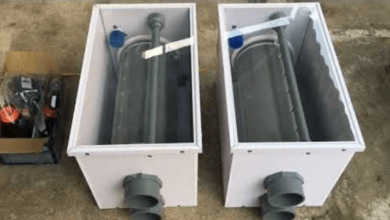What are the benefits of a forward auction?

Forward auctions constitute one form of auction in which sellers vie for an opportunity to sell to a buyer. Buyer stipulates conditions, sellers submit more and more aggressive offers until they are finally able to win the tender (or lose). Buyers may enhance their supplier performance management through the application of forward auctions, and there are several advantages of forward auctions.
Increased Competition
The essence of a forward auction is that it stimulates competition between suppliers. Buyers generate competitive bidding by pitting multiple sellers against each other, thereby inducing sellers to present their most favourable prices and terms. Unlike the case of a more passive procurement procedure whereby buyers go after various suppliers, one by one, for quotations. Sellers may not provide their best prices without the stimulus that other competitors might create. A seller lowers the price to outdo the rival seller in a forward auction; thus, prices come down. Competition ensures that prices drop and benefits are enjoyed by buyers.
Better supplier visibility
Buyers also get more visibility into the market in the forward auctions. In addition, buyers are able to gain insights into market pricing as well as the field of potential suppliers by viewing numerous competing bids unfold before their eyes during the auction. Buying agents are thus enabled to make better choices for buyers. Such visibility allows buyers to see exactly what prices suppliers would like to accept, which allows them to benchmark their prices for negotiations beyond the context of the auction. It also helps buyers comprehend new suppliers whom they might not have heard of otherwise. Overall, competitive scenarios through forward auctions help buyers with the visibility of suppliers.
Performance Management Insights
Data from forward actions can feed into supplier performance frameworks and decisions going forward. Performance data on suppliers is generated from within the auction process itself by virtue of the competitiveness of bids, responsiveness to requests for information, and ability to meet service level requirements. The performance of sellers can be measured through tracking metrics such as bid pricing change in different auction rounds, cost savings compared to other contracts, how timely their responses are, and delivery specifications they adhere to in these auctions.
Cost Savings
The biggest bottom-line benefit of forward auctions is driving major cost savings for buyers sourcing goods or services. By stimulating intensive competition where sellers fight to win business, buyers create significant pricing tension. This leads suppliers to bid prices down while still attempting to deliver acceptable service levels and quality. Studies show forward auctions enable average savings between 15-20% compared to more traditional negotiation models. For large-scale or enterprise buyers sourcing at high volumes, 20% savings quickly lead to millions in dollar cost reductions. Even smaller organizations can save thousands through forward auctions, fuelling budgets for other initiatives. Unlocking major savings in the competitive bidding process enhances financial performance.
See also: What Happens When You Don’t Have A Business Account?
Simplicity and speed
In terms of procurement, forward auctioning also offers a better solution than the usual quotation collection and negotiation process. Buyers do not contact each supplier individually via emails, calls, and visits but go through only one platform for the whole event. Digital tools like standardized electronic requests for quotes, automated notifications, built-in messaging systems, et cetera, simplify communication. They allow buyers to post their requirements, track bids, and chat with suppliers all in one place for expediency. Suppliers will also bid early in order to be the first to respond in the competitive bidding environment. This significantly speeds up the procurement cycle. Forward auctions are built in, with a level of accountability and speed giving the buyers additional time for sourcing.
Compliance and transparency
Transparency and assurance are achieved by forward auctions. The digital auction trails record supplier interactions, bids, and compliance with the process, among other time-stamped audit reports. Thus, it promotes compliance for regulated industries like healthcare and the public sector. Stakeholders, especially sponsors and athletes, also gain a view on the level of fairness and competitive nature, which enhances transparency. The auction trail demonstrates an open-market approach whereby decisions are made publicly rather than through backdoor talks. Such compliance and transparency assure buyers and internal leaders of the decisions made based on the events while securing the organization.
Encourages Innovation
Such auctions also encourage suppliers to introduce new product innovations through competitive pricing and delivery. Suppliers try to not only provide lower pricing but also create a competitive advantage based on service, quality, and capabilities by seeing what competitors are bidding in real-time.
Reduces Risk
Forward auctions help mitigate risk for buyers by diversifying the supplier base. Instead of relying on just one or two suppliers, buyers get visibility into a wider range of options through the auction process. Having multiple qualified suppliers bid for business allows buyers to spread risk across a portfolio rather than be overexposed if a single supplier underperforms or goes out of business. The competitive process results in a risk-balanced supplier mix.
Standardization Potential
By centralizing procurement through structured auctions, buyers gain potential to standardize purchases across business units. Rather than each department sourcing individually, enterprise buyers can use auctions to source certain categories of goods or services jointly. Joint procurement aggregation allows negotiation of larger volume discounts. It also enables standardization of offerings, specifications, quality levels and other procurement variables. This simplifies supplier and contract management while enabling better terms.
Supports Trend Analysis
Forward auctions generate useful supply market data over time for trend analysis by category. As multiple auctions occur, buyers can track metrics like average bids, price fluctuations, service levels and more. This data fuels analytics on pricing trends, supplier capabilities, availability issues, innovations and other trends across spend categories. Understanding market trends allows buyers to plan better, fine tune requirements and pricing models, and improve forecasting for future auctions. This enables continuous improvement in procurement practices.
Conclusion
Forward auctions provide major advantages for improving supplier performance management frameworks and reducing procurement costs. The built-in competition provides pricing leverage while giving visibility into supplier capabilities and metrics to rate performance over time. Forward actions also accelerate cycle times while enabling compliance. The combination of competition-driven savings, process simplification, and transparency makes forward auctions a highly effective procurement tool for optimizing supply management. Organizations sourcing large volumes of external goods or services should consider incorporating forward auctions into their procurement methodologies to take advantage of the substantial benefits.




